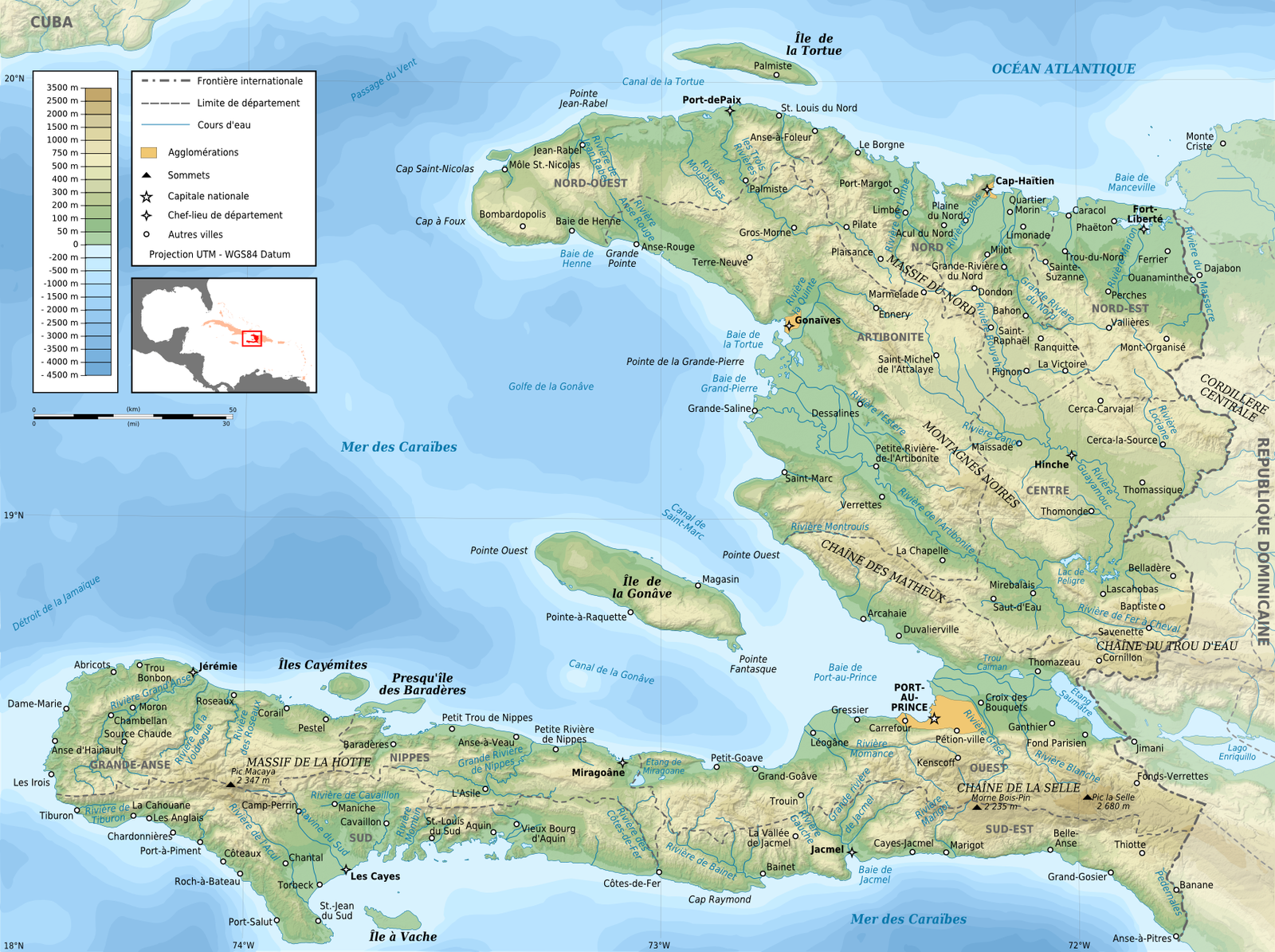Why All Eyes Should Be on Port Chinourette: Haiti’s Biggest Economic Opportunity in 100 Years
For more than 200 years, Haïti has stood at the intersection of possibility and exclusion. The first black republic in the world was born in revolution, forged by boldness, and blessed with strategic geography. And yet, through a combination of political instability, external interference, and poor infrastructure, Haïti has long remained isolated from the global economic systems that build prosperity.
But today, on the quiet northern coast between Fort-Liberté and Phaeton, a new possibility is rising up from the ground. It’s not another aid project. It’s not a symbolic ribbon-cutting. It is Port Chinourette Terminal, a bold and meticulously planned cargo port that could finally put Haïti back on the map, not as a beneficiary of generosity, but as a competitive player in global trade.
Port Chinourette is more than a logistics terminal. It’s a strategic inflection point. The kind of once-in-a-century infrastructure investment that can create jobs, stimulate industries, decentralize growth, and transform the economy of an entire nation. With capacity to handle up to three-million TEUs annually by 2040, it is the most ambitious port project in Haiti’s recent history. But its true power lies not only in its size, but in what it unlocks.
A Port to Heal the Geographic Divide
Since independence, Haiti’s economic development has followed a narrow and centralized pattern. The capital, Port-au-Prince, has absorbed the lion’s share of national infrastructure, foreign investment, and industrial capacity. Meanwhile, the North, home to revolutionary history, fertile land, and a rich cultural legacy, has remained largely disconnected from national growth.
Port Chinourette seeks to correct that imbalance. Its location in the Nord-Est department is not just convenient, it is intentional. This region, once home to Haiti’s first sugar mills and railway lines, is now positioned to lead a modern resurgence through industrial logistics. The port provides the infrastructure backbone the north has lacked for decades, paving the way for agribusiness, light manufacturing, and export-ready industries to flourish.
A New Caribbean Gateway
Haïti is surrounded by one of the busiest maritime trade corridors in the world. Thousands of ships pass through the Caribbean each year, moving goods between South America, North America, Europe, and West Africa. Yet despite sitting in this strategic location, Haïti captures a minuscule fraction of that traffic, due to underdeveloped port infrastructure and outdated facilities.
Port Chinourette changes the equation. It is designed as a transshipment hub, a place where large vessels can unload cargo, which is then repackaged and shipped to smaller markets across the region. With 670 meters of berthing space, it can host multiple large vessels or a fleet of smaller ones. Its deep-water access, proximity to international shipping lanes, and ample expansion room make it uniquely positioned to become a central Caribbean logistics node.
The primary focus will be container handling, but the port is designed to manage a broad spectrum of cargo activities: bulk storage of goods like steel and cement, agricultural commodities such as rice and sugar, vehicles through Ro-Ro operations, and fuel via liquid bulk tank storage. All of this is structured within a flexible, phased master plan, allowing private operators to invest in and operate individual facilities within a unified authority framework.
An Engine of Employment and Growth
What makes ports transformative goes beyond their concrete and cranes, it’s their ripple effect. Ports create jobs not only for dock workers, engineers, and security guards, but for an entire web of support industries. Every new ship docking brings demands for food, housing, transportation, storage, and distribution. Over time, this turns into a supply chain, then into an economy.
The construction phase of Port Chinourette alone will generate thousands of short-term jobs in land clearing, grading, fuel tank installation, warehouse building, and civil engineering. Once operations begin, the port will support long-term employment in warehousing, customs, equipment maintenance, maritime services, and cargo handling.
But the impact won’t stop at the port’s perimeter. Trucking companies, export-prep centers, logistics firms, agribusinesses, and packaging companies will all find new opportunities. In the surrounding region, small vendors to larger service providers, will find a new customer base and a more predictable flow of income.
The multiplier effect is real. For every direct port job created, studies show that up to five additional jobs can emerge in the surrounding economy. In a country like Haiti, where youth unemployment is high and emigration rates are soaring, this project offers something rarely seen: a reason to stay.
A Bold Business Case with Real Numbers
Beyond the symbolism and vision, Port Chinourette is also a bankable business project. Its financial structure is built for sustainability and return on investment.
on year one, the port is projected to generate $4.8 million in revenue, even as it ramps up operations. By year five, revenues are expected to reach $13.9 million, with operational cash flow of $24.4 million and a net profit exceeding $3.8 million. The return on equity begins to turn positive by year three and continues to strengthen thereafter. This is a rare example of a Haitian infrastructure project that offers both social return and financial viability.
Importantly, the investment model is diversified. Funding includes capital from private operators, equity partners, and structured debt, carefully distributed across core components, warehousing, equipment, fuel storage, and support infrastructure. The financial design emphasizes long-term durability and attractive returns for investors without compromising the project’s local economic mission.
The Cultural and Historical Continuation
There is something poetic about building Haiti’s most forward-looking port in the north.
This is the region that gave the world the Citadel. That saw King Henry Christophe build schools, factories, and an industrial vision in the early 1800s. That hosted sugar refineries, ports, and railroads during Haiti’s earliest economic expansions. In many ways, the north was always meant to lead.
Port Chinourette reconnects with that legacy, grounded in relevance rather than nostalgia. It embodies a move toward production instead of passive consumption. A new pride in shipping goods out, not waiting for them to arrive. It is, at its core, a statement of belief that Haiti’s best chapters are still ahead, and that they can be built with ports, not just politics.
Infrastructure is Economic Freedom
Around the world, ports have served as catalysts for national transformation. In Singapore, a fishing village became a global commerce giant. In Panama, a canal reshaped global shipping and revived national revenue. In Morocco, the Tanger-Med port turned a rural zone into a manufacturing titan.
Haïti has waited far too long to make that leap. With Port Chinourette, the country has a rare opportunity to do so, by leveraging its own strengths: location, labor, and resilience.
This port is not a gift. It is a tool. And tools, in the right hands, change everything.
What if Logistics, Not Politics, Is the Real Revolution?
We’ve long believed that change in Haïti will come from political shifts or international aid. Perhaps we’ve overlooked the quiet power of logistics. The ability to move goods, create efficiency, lower costs, and give entrepreneurs access to the world.
Port Chinourette offers something no foreign donation ever could: the power to compete. To export. To build. To dream economically.
The market is waiting. The project is underway. The time is now.
The Visionaries Behind the Transformation
At the heart of this monumental initiative stands Fatima Group, the bold and visionary private equity firm catalyzing this transformation. With a legacy rooted in Haiti’s soil since 1943, Fatima Group has consistently invested in the country’s most critical sectors, from shipping and media to healthcare and tourism. Now, through Port Chinourette, they are channeling over 80 years of entrepreneurial spirit and infrastructure expertise into a project that could redefine Haiti’s economic destiny.
Their unwavering belief in Haiti’s potential and their ability to turn strategy into action, makes FatimaGroup not just the initiator of this project, but the architect of a new national chapter.
This is more than a port, it’s a legacy in the making. And for investors, whether individual or institutional, Haitian or international, private or public, it represents a once-in-a-generation opportunity to shape the future of Haïti through infrastructure that lasts.
















